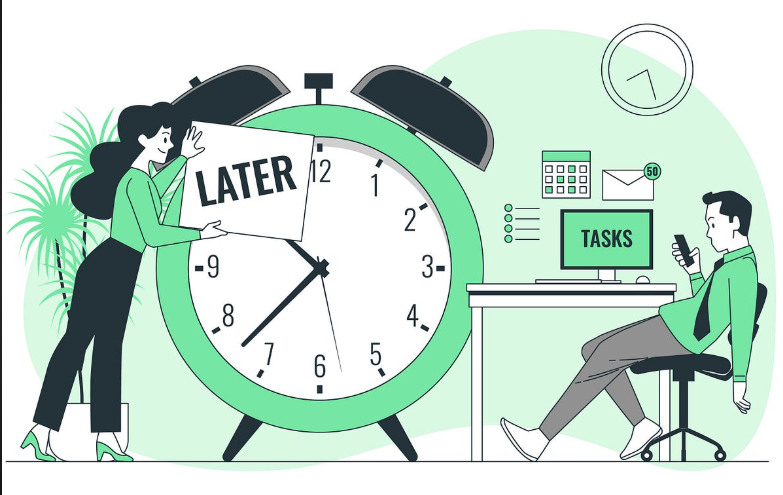Stop Procrastination: Harness the Power of Meditation to Boost Productivity

Exploring Effective Meditation Techniques to Combat Procrastination and Enhance Productivity
Procrastination is a widespread challenge that impacts individuals across various walks of life. It is an emotional and cognitive barrier that prevents people from accomplishing tasks or achieving their goals. Despite knowing the importance of certain tasks or being aware of their consequences, many people still delay or avoid doing them. Whether it’s avoiding work, personal projects, or even basic daily tasks, procrastination can lead to stress, guilt, and a mounting sense of unfulfillment. This problem often stems from deeper emotional issues such as anxiety, self-doubt, and lack of motivation.
Fortunately, mindfulness and meditation techniques offer a powerful solution for combating procrastination and boosting productivity. Through mindfulness practices, individuals can cultivate a proactive and focused mindset that helps them stay present, reduce negative thoughts, and eliminate the mental clutter that fuels procrastination. Meditation techniques are not only useful for relaxation and stress relief, but they also enhance self-awareness, concentration, and emotional regulation—all of which are critical to overcoming procrastination.
In this blog, we will explore a variety of meditation techniques that can help individuals combat procrastination, overcome anxiety, build focus, and significantly increase their productivity. These practices are simple, yet profoundly effective, and can be easily incorporated into daily routines. By consistently applying these techniques, individuals can foster a mindset of mindfulness, where each task is approached with clarity and intentionality.
1. Mindful Breathing: Calming the Mind and Restoring Focus
One of the most accessible and effective meditation techniques for managing procrastination is mindful breathing. This technique involves focusing your attention solely on your breath, allowing you to create a sense of stillness and focus in the present moment.
When procrastinating, it’s common to feel overwhelmed by the sheer number of tasks or by negative emotions such as anxiety or fear of failure. These feelings often lead to avoidance behaviors. Mindful breathing serves as an antidote by grounding you in the present and quieting the distractions in your mind.
How it works:
- Find a quiet space and sit comfortably.
- Close your eyes and take a few deep breaths to relax.
- Shift your attention to the sensation of your breath—notice the rise and fall of your chest, the sensation of air entering and leaving your nostrils.
- If your mind wanders, gently bring your focus back to your breath without judgment.
By practicing mindful breathing for just a few minutes daily, you can gradually reduce feelings of anxiety and restlessness, allowing you to approach tasks with a clearer, calmer mind. It also strengthens your ability to focus on the task at hand, making it easier to begin and stay productive.
2. Visualization: Creating a Clear Mental Picture of Success
Another effective technique to combat procrastination and enhance productivity is visualization. Visualization involves mentally imagining yourself successfully completing a task or achieving a goal. By vividly picturing success, individuals can motivate themselves, reduce negative thoughts, and break through mental barriers.
How it works:
- Begin by sitting in a comfortable position, closing your eyes, and taking a few deep breaths.
- Visualize yourself completing the task you’ve been avoiding. Picture every step in the process—from starting the task to successfully completing it.
- Focus on the emotions you would feel once you finish the task: pride, relief, satisfaction, or accomplishment.
- The more detailed and vivid your mental image, the more powerful this technique will be in motivating you to take action.
Visualization taps into the subconscious mind, helping you build confidence and develop a sense of ownership over your tasks. As you see yourself succeeding, you’ll begin to associate the task with positive feelings rather than stress or avoidance, making it easier to take the first step.
3. Setting Intentions: Fostering Motivation and Clarity
A critical element of overcoming procrastination is setting clear and specific intentions. Often, procrastination arises from a lack of direction or uncertainty about where to start. Meditation can help you clarify your intentions and strengthen your commitment to completing your goals.
How it works:
- Before starting your day or task, take a few moments to meditate on your intentions.
- Close your eyes, take a few deep breaths, and ask yourself: "What do I want to accomplish today? What is the first step I can take toward achieving this?"
- Visualize yourself actively working on the task, and feel the motivation and energy that flows from your clear intention to succeed.
By setting intentions through meditation, you create a mental roadmap that can help you prioritize tasks and tackle them without feeling overwhelmed. This practice reinforces your commitment to take action and helps you overcome procrastination by ensuring that your focus aligns with your values and goals.
4. Body Scan Meditation: Releasing Physical Tension and Mental Blockages
Procrastination isn’t just a mental problem; it also has physical manifestations. Stress, tension, and discomfort can make it harder to focus and work effectively. Body scan meditation helps you address these physical manifestations of stress and bring attention to the parts of your body where tension is stored. By releasing this tension, you can cultivate a deeper sense of calm and mental clarity.
How it works:
- Lie down or sit comfortably in a quiet space.
- Close your eyes and begin by taking a few deep breaths.
- Starting from the top of your head, mentally scan your body for areas of tension. Slowly move your attention down through your face, neck, shoulders, arms, chest, abdomen, legs, and feet.
- As you focus on each body part, try to consciously release any tension or discomfort you feel.
By incorporating body scan meditation into your routine, you can alleviate physical discomfort that might otherwise hinder your ability to stay focused and productive. Reducing physical tension allows for a clearer mental state and increased energy to tackle tasks.
5. Mindful Walking: Cultivating Movement and Motivation
Sometimes sitting still for meditation may feel difficult, especially when you are feeling restless due to procrastination. In such cases, mindful walking can be an excellent alternative. Walking meditation combines physical movement with mindfulness, helping to ground you in the present moment and clear mental fog. The act of walking encourages circulation and increases energy levels, which can help overcome feelings of lethargy or mental blockages.
How it works:
- Find a quiet space where you can walk undisturbed.
- Walk slowly and pay attention to each step you take. Feel the ground beneath your feet, the movement of your body, and the rhythm of your breath.
- As you walk, allow your thoughts to come and go without judgment, gently bringing your attention back to your breathing or steps if your mind wanders.
Mindful walking is an excellent technique for promoting both physical and mental focus. It helps you combat procrastination by offering a form of meditation that invigorates both the mind and body, making it easier to focus on tasks afterward.
6. Loving-Kindness Meditation: Overcoming Self-Doubt and Negative Self-Talk
Procrastination is often fueled by negative self-talk, self-doubt, and fear of failure. Loving-kindness meditation, also known as Metta meditation, helps individuals cultivate self-compassion and a more positive mindset. By focusing on feelings of love, kindness, and acceptance, you can dissolve the negative emotions that contribute to procrastination.
How it works:
- Sit in a comfortable position, close your eyes, and take a few deep breaths.
- Begin by silently repeating phrases such as: "May I be happy. May I be healthy. May I be safe. May I live with ease."
- After a few minutes, extend these wishes to others: loved ones, acquaintances, and even those you may find difficult.
- Finally, extend the same loving-kindness toward the tasks or challenges that cause you procrastination, encouraging yourself with feelings of compassion.
By regularly practicing loving-kindness meditation, you can break free from the negative self-talk that often drives procrastination. You’ll develop a more compassionate relationship with yourself and learn to approach tasks with patience, understanding, and self-acceptance.
Conclusion: The Path to Proactive Mindfulness
Meditation techniques can serve as powerful tools for overcoming procrastination and enhancing productivity. By incorporating practices such as mindful breathing, visualization, setting intentions, body scans, and loving-kindness, individuals can reduce anxiety, build focus, and foster a proactive mindset. These practices enable individuals to break free from the cycle of procrastination, improve their ability to concentrate, and cultivate a more productive and fulfilling life.
Through regular practice, these techniques help rewire the brain, allowing individuals to approach tasks with mindfulness, clarity, and motivation. As individuals continue to integrate these practices into their daily routines, they will find that procrastination no longer has the same grip on them, and they are more equipped to tackle challenges with confidence and focus.
By fostering mindfulness and meditation as part of your personal growth journey, you can unlock your full potential, achieve your goals more efficiently, and ultimately lead a more productive and fulfilling life.
Posted By: Ashish kumar
.gif)
.gif)





%20(600%20%C3%97%20450px)%20(600%20%C3%97%20360px)%20(500%20%C3%97%20300px)%20(448%20%C3%97%20300px).jpeg)
.jpeg)
%20(800%20%C3%97%20450px).jpeg)
%20(509%20%C3%97%20336px)%20(528%20%C3%97%20264px).jpeg)